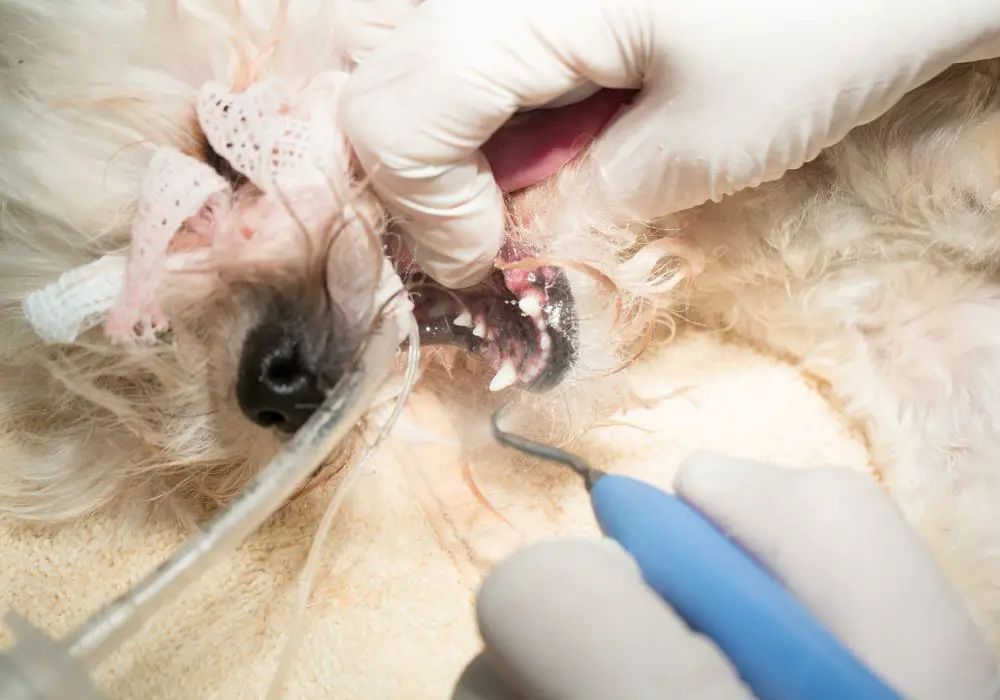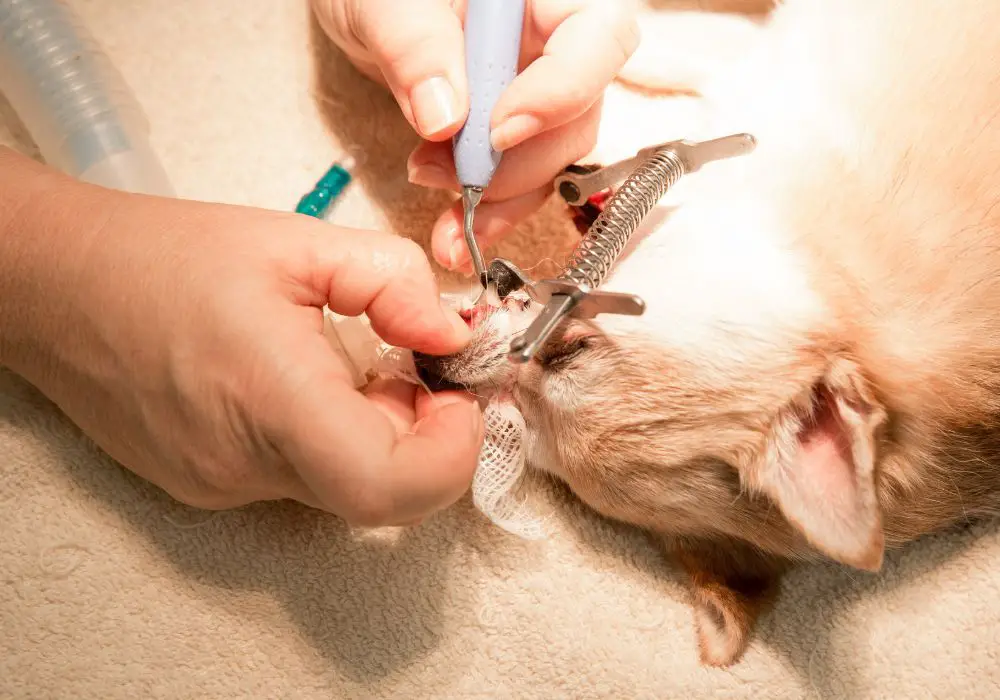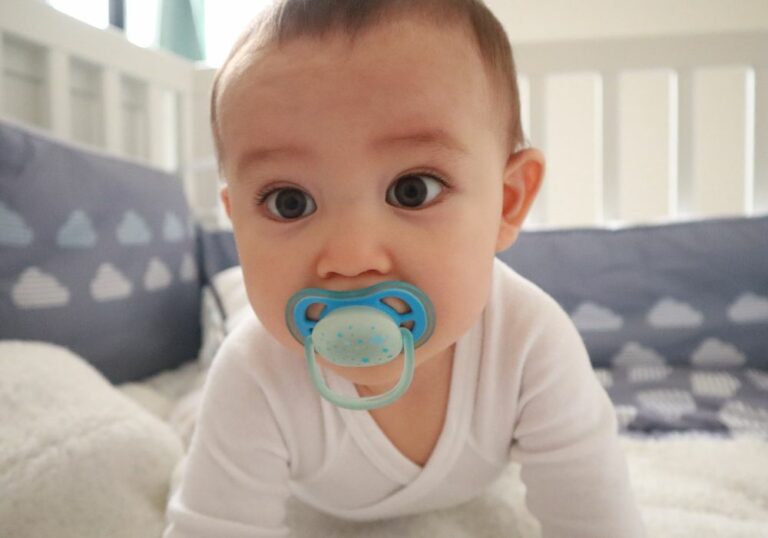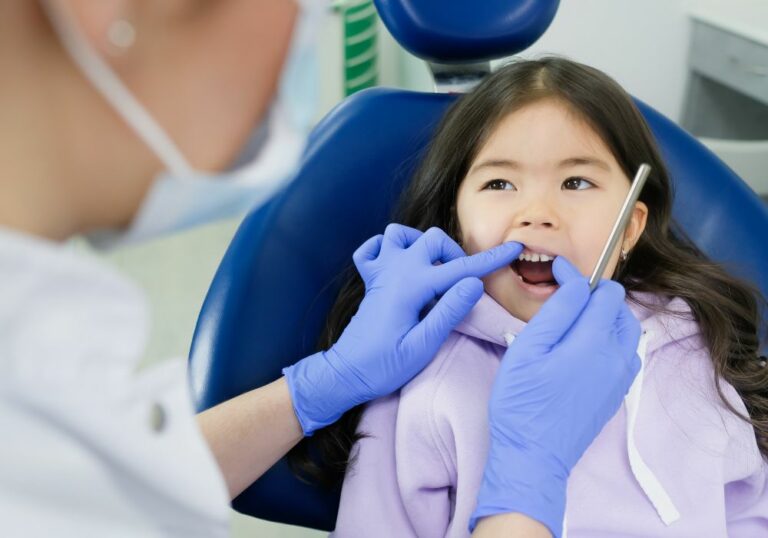Is your dog scheduled for a teeth cleaning appointment? If so, hop to! Taking your dog for its first teeth cleaning can be challenging if you do not know what to expect! A common part of the process includes anesthesia, which is implied in complete and thorough dental cleaning.
Also, most dogs do not like people meddling with their teeth and often protest while getting either dental cleaning or being groomed. So, most dog owners want to know how long a dog is under anesthesia for teeth cleaning!
So, let’s check that out!
Dog’s Teeth Cleaning: How Long Is a Dog Under Anesthesia?
Your dog will be under anesthesia for teeth cleaning between 60 to 90 minutes, although the process can last longer or shorter! After anesthesia, your dog will wake up in a span of 20 minutes.
The duration of the process depends on several factors. First, it depends on the current condition of your dog’s teeth!
Some dog owners take their dog’s oral hygiene lightly, which usually results in a large buildup of plaque and tartar around their gums.
Obviously, if your dog’s teeth are in bad condition, the process will take longer, and it often includes x-rays, which allow the vet to inspect the teeth below the gum line and determine whether there is an anomaly or issue with your dog’s teeth!
You can bet on the process taking longer if your dog also has a preexisting condition or requires an extraction.
Dog’s Teeth Cleaning: What to Expect?
If this is the first time you are taking your dog for dental cleaning, sit tight because we will review the stages of the dental cleaning in detail and provide the necessary information!
1. Complete Physical and Oral Exam
A veterinarian usually performs a thorough physical and oral exam on your dog to determine whether the dog has any conditions or health issues that might result in complications during the procedure.
You will probably discuss your dog’s medical history with the vet, who will carefully review it and suggest other procedures to identify and treat underlying dental conditions, if necessary. Those might include periodontal probing or X-rays.
Also, most veterinarians will suggest that you do not feed your dog the night before the dental cleaning because it might result in your dog vomiting after the procedure.
2. Laboratory Work Up / Pre-Anesthetic
Before the procedure starts, the vet usually does blood work and even takes urine samples.
Doing blood work is an important part of most procedures that include anesthesia, and, in this case, it allows the vet to determine whether there is an organ dysfunction, hydration or dehydration, glucose level, and any underlying infections.
In case the blood work shows any health issue that may put the dog at risk, the procedure will most likely be canceled or postponed. In these situations, you can expect additional exams and diagnostic testing.
3. Inducing Anesthesia
After getting blood work results and the green light for the teeth cleaning, the vet or the technician will first put an intravenous catheter or IV tube inside your dog’s vein, so they can administer medications if necessary.
During the procedure, the vet will also run or administer fluids to control the dog’s blood pressure and help the kidneys get rid of the anesthetics.
Sometimes they add medication to prevent your dog from vomiting, which often happens after the procedure. Then, your dog will receive a sedative with some pain killer to ensure the dog is pain and stress-free.
Having placed the catheter, the veterinarian will then administer anesthesia, rendering your dog completely unconscious.
The vet will add a breathing tube to protect its airways and provide oxygen and anesthetic gas to keep the dog asleep for the duration of the procedure.
4. Diagnostic Testing / X-Rays

Depending on your vet’s practice, they might suggest doing x-rays of your dog’s teeth to determine whether there is a problem, such as periodontal disease.
Commonly known as gum disease, it is a dental condition that affects dogs very often, and it can lead to complete tooth loss if left untreated.
Considering that periodontal disease in its early stages, known as gingivitis, has almost no symptoms, preventive dentistry is the key to combating it. That is why most dentists will suggest X-rays as a precaution!
The effects of periodontal disease and many other conditions in most cases cannot be reversed, which makes regular dental check-ups highly important!
Also, it allows them to inspect their teeth thoroughly and carefully- almost 60% of the dog’s teeth are under the gum line, meaning diagnosing most conditions without an x-ray is challenging.
5. Tooth Scaling and Cleaning
The heart of the procedure is the removal of the plaque and tartar around your pet’s gums, usually using a scaler- either a hand-held, digital ultrasonic scaler, or both!
During this stage, most vets will use the opportunity to do periodontal probing, which includes inspecting your dog’s pockets around the teeth to see whether there is any infection. These pockets filled with puss and bacteria are called tooth root abscesses.
This is another serious dental condition that can be recognized by the dog’s swelling on the face, bad breath, and difficulties while consuming food. It can easily lead to tooth decay and even spread infection to other body areas.
Also, this stage can include treatment of the dog’s decayed teeth or even tooth extraction if the tooth is beyond recovery.
After scaling and thorough cleaning, the vet will proceed to polish the dog’s teeth or do a fluoride treatment, which will help with preventing future tartar buildup but also strengthen the teeth’s enamel.
6. Wakey Wakey!
After the process is done, the vet or the veterinary technician will remove the residue (if there is any) from fluoride or any other solutions used during the process and then allow your dog to wake up.
If your dog was diagnosed with a condition or infection, you will probably get an antibiotic (for your dog, not you) and pain medication. The vet may leave the breathing tube for a couple more minutes to let the pet breathe fresh oxygen while the anesthetic gas is turned off.
Then, they usually place the dog in a more comfy place so the waking process is not so confusing and stressful. After 15 to 20 minutes, depending on how much gas was administered, the dog will slowly start to wake up.
When it can swallow, the vet takes out the tube, and if the dog can stand on its feet, you two are free to go home!
FAQ

1. Why is Dog Dental Care Important?
Most people love their pets but, unfortunately, often avoid brushing their teeth and taking them for cleaning due to a lack of interest, time, and also funds. Whatever the reason, dental care for your dog is not a luxury but a necessity!
Most dog owners, like me, want their dogs to be happy and healthy, and caring for their teeth is a part of that process.
Neglecting dental cleaning can cause dental disease, and the problem with dogs’ teeth (also with ours) is that most conditions, if not treated early, result in tooth loss and other complications that cannot be reversed.
Losing teeth or having loose teeth is not a pleasant experience for dogs, and it often includes swelling, itchy sensations, pain, and discomfort while eating; we all know how much dogs love their food!
2. How Often Should I Take My Dog for Teeth Cleaning?
It depends! Older dogs need dental exams more often than younger ones because their teeth are more susceptible to dental conditions and tooth decay. Obviously, the main factors are the time, the dog’s diet and habits, and oral hygiene (if there are any).
In other words, over time, your dog eats various foods and chews on toys or bones, which may chip or damage its teeth. If your dog has a condition or is genetically predisposed to dental disease, this may also affect how often your dog will need teeth cleaning.
Some breeds are prone to some dental diseases more than others.
So, if your dog is over seven, you should see a veterinary dentist once a year. Generally, teeth cleaning is suggested for dogs over the age of five, while the smaller breed dogs can have their teeth cleaned at the age of two years.
Their mouth is smaller, and there is usually dental crowding which can exacerbate certain conditions as well as accumulation of plaque. If you are interested in dental care for small dogs, click here!
3. Is Anesthesia-Free Cleaning as Effective as Cleaning Under Anesthesia?
The dog is placed under anesthesia because it is a highly stressful situation for the dog, and it will definitely not be able to stay still for the duration of the process, allowing the dentist to do all that is necessary!
The thing about anesthesia-free cleaning is that it is not even remotely thorough as the one with anesthesia. The vet can perform scaling without anesthesia, which is basically scraping the plaque and tartar with an instrument.
If you want to learn more, here is an in-depth article that covers the pros and cons of anesthesia-free cleaning!
Conclusion
Teeth cleaning in dogs can last an hour or several hours but generally lasts between 60 and 90 minutes. In the first part of the article, we have discussed what affects the duration of the process and the stages of teeth cleaning.
Also, we have answered some of the common questions regarding the topic! Have you ever taken your dog for dental cleaning? Please, share your experience with us! If you have any questions, feel free to share them!







